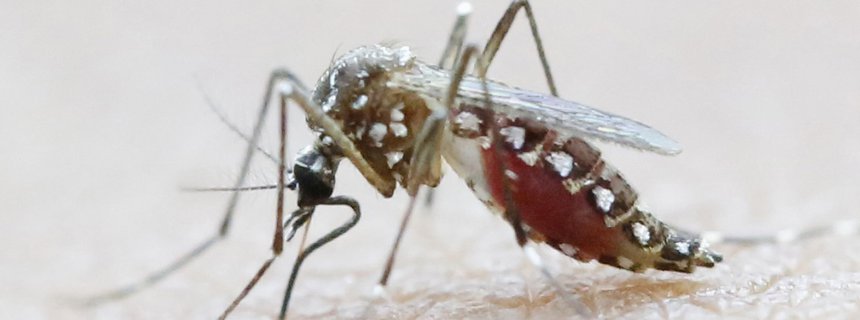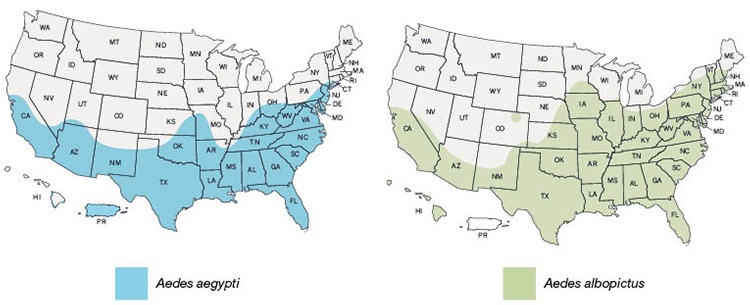The Zika Virus Mosquito Is so Dangerous the Military Considered Using It as a Weapon
MILITARISM, 1 Aug 2016
Rod Tanchanco | History News Network – TRANSCEND Media Service
31 Jul 2016 – It is a master of stealth, stretching less than half an inch long and weighing in at 2.5 milligrams with as estimated air speed of 1 to 1.5 miles per hour. It is virtually soundless in flight, registering zero decibels from ten feet. Its tracking systems hone in on targets by detecting infrared radiation from warm bodies, chemicals such as carbon dioxide and lactic acid, body odors from as far as a hundred feet, as well as movement from fidgety hosts. It can carry an impressive array of payload: up to 32 different types of viruses, many of which are lethal to humans. And it protects itself from the same viruses with a well-developed immune system that provides a highly effective antiviral defense mechanism. The Aedes mosquito, insect vector for dozens of viruses including the Zika virus, is a near-perfect drone.
If you think about the number of human casualties caused by disease-bearing insects throughout the ages, it’s not hard to see why their potential use as a weapon was not lost to military strategists. In 1942, an entomological institute was created at the Dachau concentration camp under the orders of Nazi Schutzstaffel (SS) head Heinrich Himmler. An article by Klaus Reinhardt pointed to Nazi research protocols involving malaria-bearing mosquitos being tested for “air-dropping.”
The horrific Unit 731 of the Japanese Imperial Army dropped bombs loaded with plague-infested fleas on Chinese cities, killing hundreds of thousands of civilians. At the tail end of the Second World War, Japan planned to send kamikaze pilots to attack San Diego and cause an outbreak of plague. The operation, dubbed Cherry Blossoms at Night was never carried out. Japanese generals also considered sending balloons armed with plague or anthrax to the U.S. mainland.

The Aedes aegypti has taken over the crown of the world’s most dangerous mosquito from the malaria-carrying Anopheles. The Aedes carries diseases such as dengue fever, yellow fever and Zika. Efforts are underway around the world to protect people from the Aedes aegypti and the diseases it transmits.
In the 14th century, the Mongol army did not lob plague-ridden fleas into the Crimean City of Caffa, instead they catapulted scores of rotting corpses infested with Yersinia pestis. Italian Gabriele de Mussi’s memoir described the siege: “what seemed like mountains of dead were thrown into the city,” with the hope that the “intolerable stench would kill everyone inside.” As repulsive as the stench must have been, it was the subsequent bubonic plague, sweeping through Europe, North Africa, and the Near East, that decimated up to a third of the population.
An unclassified document from the United States Army Chemical Corps in 1960 described aspects of its chemical and biological warfare efforts. It revealed that “In 1953, the Biological Warfare Laboratories in Fort Detrick established a program to study the use of arthropods for spreading anti-personnel BW agents.” The report cited the advantages of using insects: they inject pathogens directly into the body so wearing masks would not be protective, and “they will remain alive for some time, keeping an area constantly dangerous.” Such an attack would have been difficult to detect, and even if discovered, the disease would have already broken out.
The program studied the use of Aedes aegypti and Yellow Fever Virus. During this Cold War era, the obvious target was the U.S.S.R.; as the report noted, “Yellow Fever has never occurred in some areas, including Asia, and therefore it is quite probable that the population of the U.S.S.R would be quite susceptible to the disease.”
Between April and November of 1956 the Corps released uninfected female mosquitos in a residential area in Savannah, Georgia. The report indicated that this was carried out with the cooperation of the neighborhood residents who helped estimate how many mosquitos entered their homes and bit people. In the same period, a similar test was performed at the Avon Park Bombing Range in Florida. They learned that within a day, mosquitos had travelled one to two miles and had bitten many people.
A 1958 test in the same area confirmed that “mosquitoes could be spread over areas of several miles by means of devices dropped from planes or set up on the ground. And while these tests were made with uninfected mosquitoes, it is a fairly safe assumption that infected mosquitoes could be spread equally well.” According to the report, testing of the Yellow Fever Virus itself remained confined to the lab and utilized monkeys and mice. The Corps proposed the construction of a large-scale facility to produce the Aedes-Yellow Fever Virus combo that could be disseminated with bombs.
Interestingly, the actual introduction and establishment of the Aedes mosquito into the U.S. mainland occurred after World War II. The hardy insect managed to sneak in inadvertently through used tires imported from Asia. Inspections of 11 shipments containing tires arriving at the Port of Los Angeles between 1945 and 1946 revealed immature mosquitoes in water in 4 of the shipments. Three of these included living larvae and adults from mosquito species that were not indigenous to the U.S.
A 1972 article by Richard Eads of the CDC reported that used tires were especially high risk cargo for the dissemination of the mosquito. Eads noted that tires containing water provide ideal sites for egg-laying and that even when the tires arrived dry in the U.S., the mosquito eggs remained viable for months. In the 1960s, large amounts of military shipments called retrograde cargo were entering the U.S. from Vietnam. While the cargo shipped in U.S. government-owned vessels were required to be treated with larvicides, such regulation did not extend to the civilian contractors shipping surplus materials via commercial vessels.
Evidence that the mosquito had established itself in the U.S. mainland was finally confirmed in the summer of 1985. Aedes albopictus (Skuse), the supposedly less fearsome Aedes species as compared with Aedes aegypti, was found breeding in several tire dumps in Harris County, Texas. Currently, the CDC’s map reveals a wide distribution of both species across the southern U.S. and extending as far north as Vermont, New Hampshire, and southern Minnesota for Aedes albopictus.
The establishment and spread of Aedes albopictus, the Asian Tiger mosquito, has worrisome implications. While its contribution to the spread of epidemics has not been as significant compared with Aedes aegypti, in instances when its more notorious cousin is absent, the Asian Tiger mosquito may assume the primary vector role for transmission. Moreover, its ability to survive in more temperate climates effectively extends its range. The recent introduction and spread of the Zika virus has not only understandably caused considerable concern, but has also reinforced the risk of both Aedes species’ potential to transmit multiple diseases.
__________________________________
Rod Tanchanco MD is a physician and writer. He blogs at rodtmd. Twitter: @rodtmd .
Go to Original – historynewsnetwork.org
DISCLAIMER: The statements, views and opinions expressed in pieces republished here are solely those of the authors and do not necessarily represent those of TMS. In accordance with title 17 U.S.C. section 107, this material is distributed without profit to those who have expressed a prior interest in receiving the included information for research and educational purposes. TMS has no affiliation whatsoever with the originator of this article nor is TMS endorsed or sponsored by the originator. “GO TO ORIGINAL” links are provided as a convenience to our readers and allow for verification of authenticity. However, as originating pages are often updated by their originating host sites, the versions posted may not match the versions our readers view when clicking the “GO TO ORIGINAL” links. This site contains copyrighted material the use of which has not always been specifically authorized by the copyright owner. We are making such material available in our efforts to advance understanding of environmental, political, human rights, economic, democracy, scientific, and social justice issues, etc. We believe this constitutes a ‘fair use’ of any such copyrighted material as provided for in section 107 of the US Copyright Law. In accordance with Title 17 U.S.C. Section 107, the material on this site is distributed without profit to those who have expressed a prior interest in receiving the included information for research and educational purposes. For more information go to: http://www.law.cornell.edu/uscode/17/107.shtml. If you wish to use copyrighted material from this site for purposes of your own that go beyond ‘fair use’, you must obtain permission from the copyright owner.
